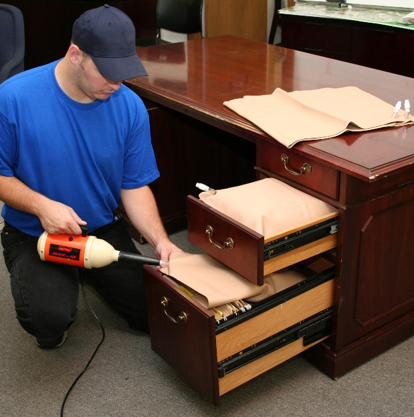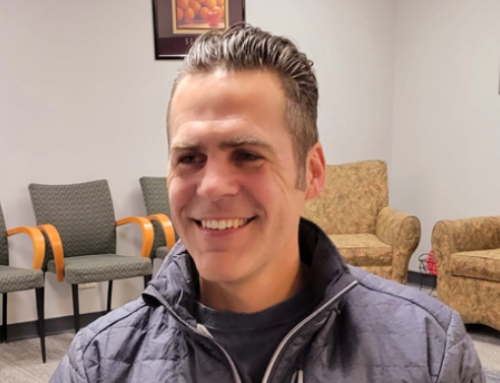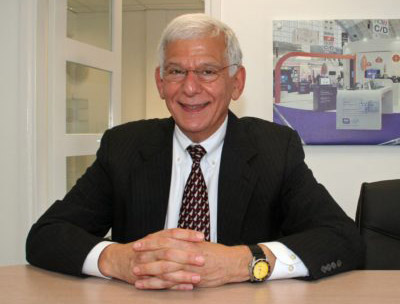In my last blog, I talked about my vision of saving my moving company from Goliath by inflating airbags inside desk drawers and moving lateral file cabinets, fully loaded, with a crane. One year later, I rolled out my first two patented inventions—Space Gobblers and Spider Crane. How did I do it? How did I invent them? How did I bring them to market?
Here’s the path I followed:
- Step 1: I told my wife, friends, and employees about my idea of moving office furniture with the contents remaining inside. Everyone—including my wife—thought I was crazy. They put a negative aura around my idea. Believing them, I tried to erase the concept from my mind. The more I tried, the more obsessed I became with the “boxless move.”
My advice to you: Keep your cards close to your vest and tell no one about your invention. If you tell them about it, your friends and relatives might be negative, too, and throw cold water on your enthusiasm.
- Step 2: Identify who can make a prototype of your invention. I called several steel fabricators in Atlanta and asked if they could build a prototype crane for me. Most told me they only handled production work and couldn’t design or build one of anything. With persistence, I finally found one who agreed to build it and charged me a fortune to design and build my first Spider Crane.
My advice to you: Get a firm price from whoever builds your prototype before placing the order, so you don’t get ripped off, as I did.
- I contacted the only waterbed manufacturer in Atlanta, and they agreed to make two customized miniature waterbeds—Space Gobblers—the size of a pillowcase. It took them several months to make them.
My advice to you: In addition to getting a price before you place the order, get a realistic deadline from your fabricator. Then call and visit them at least once a week to move the project along so that it finishes in a timely manner.
- Test the prototypes before using them. To show all the naysayers they were wrong, I set the Spider Crane and a fully loaded lateral file cabinet (weighing 800 pounds) in my warehouse, in front of my employees and my wife. It was so quiet; you could have heard a pin drop. I lowered the two giant rubber suction cups over the top of the cabinet, turned on the vacuum pump, created a vacuum of minus 19 inches, and started hoisting the cabinet off the floor. The demonstration ended as soon as it began when the vacuum cups bowed (bent) the top of the cabinet, making it look like a Conehead from the movie with the same name starring Dan Aykroyd. Everyone in the room burst out in uncontrollable laughter, and I was devasted.
My advice to you: Never, ever test a prototype in front of an audience. Only after you have had a successful test should you share your project with anyone. With a lot more prayers, I ultimately overcame the bowing problem by switching to rigid (instead of pliable rubber) vacuum cups. And the experience taught me a great biblical lesson—always be humble and never brag or boast.
Seven months later, I finally got my first two prototypes of my Space Gobblers. Without an audience, I tested them, and they worked perfectly.
- After my baptism by fire with my horrific Spider Crane experience, I humbly rolled out my new inventions. Instead of blasting the marketplace with print media and radio advertising (back in 1982 there was no Internet or email), I tried a unique approach. I contacted several facility managers of large companies in Atlanta that were always moving like Southern Bell (now AT&T), Rockwell International, and US Sprint (Sprint). I asked them if I could please meet with them because I was thinking of developing new inventions for making office moves much less disruptive—hoping to get feedback from them. When I met with each one, I didn’t tell them I had already perfected the devices. They all gave me very positive comments about how a “boxless move” would eliminate the problem of mixed-up and lost files and reduce the amount of nonproductive employee downtime before and after a move.
Two months later, I contacted each of them again. I thanked them for all their help, told them I took their advice, and let them think that because of them, I was able to develop the inventions. I asked if they would like a free demonstration; only Southern Bell agreed to it. At their world headquarters in downtown Atlanta, my movers “dollied up” two of their fully loaded 5-drawer high, 42-inch-wide lateral file cabinets with our Spider Crane in front of their 12-member facility associate team. They loved it so much that when their annual contract came up for renewal two months later, my moving company got most of their moves, totaling more than $1 million per year. Both Rockwell and Sprint didn’t want a demonstration. Instead, they simply hired us to handle all their moves for the next several years. In the case of Rockwell, it totaled several million dollars.
My advice to you: Once you know you’ve got your invention perfected, solicit help and feedback from prospects and customers who can benefit. Then go back to them when you roll it out and give them the credit for helping you make it successful. Ask them if you can give them a demonstration, and then ask for their business.

Spider Crane lifted fully loaded lateral file cabinet

Space Gobblers inflated inside of fully loaded desk drawers
Be sure to join our Group at https://www.linkedin.com/groups/12060567
For more information on our online office moving training, please visit
https://www.officemoves.com/training/index.html or call Ed Katz at 404.358.2172.










